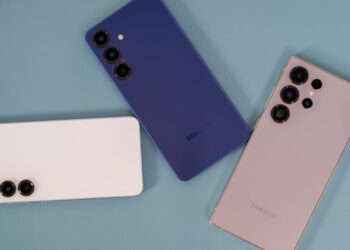Xiaomi’s Redmi has released its K70 series in China, which includes the Redmi K70, Redmi K70E, and Redmi K70 Pro models. All three phones have a 6.67-inch display with up to 2K resolution and come with triple rear cameras. They feature a 16-megapixel selfie camera and run on HyperOS, which is based on Android 14.
The Redmi K70 Pro is powered by a Snapdragon 8 Gen 3 SoC, while the regular Redmi K70 runs on a Snapdragon 8 Gen 2 SoC, and the Redmi K70E runs on MediaTek Dimensity 8300 Ultra SoC. The Redmi K70 and Redmi K70 Pro both have a 5,000mAh battery that supports 120W fast charging.
The Redmi K70 model with 12GB RAM + 256GB storage starts at CNY 2,499 (approximately Rs. 29,000). The 16GB RAM + 256GB storage version is priced at CNY 2,699 (approximately Rs. 31,000), and the 16GB RAM + 512GB storage model at CNY 2,999 (around Rs. 35,000). The top-end variant with 16GB RAM + 1TB storage is priced at CNY 3,399 (roughly Rs. 40,000).
The Redmi K70 Pro is priced at CNY 3,299 (approximately Rs. 38,600) for the 12GB RAM + 256GB model, CNY 3,599 (approximately Rs. 42,000) for the 16GB RAM + 256GB storage variant, CNY 3,899 (approximately Rs. 45,000) for the 16GB RAM + 512GB option, and CNY 4,399 (approximately Rs. 51,000) for the top-end 24GB RAM + 1 TB storage variant.
The Redmi K70E is priced at CNY 1,999 (approximately Rs. 23,000) for the 12GB RAM + 256GB model and CNY 2,199 (approximately Rs. 25,000) for the 12GB RAM + 512GB model. The top-end model with 16GB RAM + 1TB storage is priced at CNY 2,599 (approximately Rs. 30,000).
The Redmi K70 Pro comes in Ink Black, Snow White, and Bamboo Moon Blue shades, while the Redmi K70 is available in Ink Black, Snow White, Bamboo Moon Blue, and Eggplant Purple colour options. The Redmi K70E is available in Ink Black, Snow White, and Bamboo Moon Blue finishes.
Redmi K70 – Redmi K70 Pro- Redmi K70E Specifications
The Redmi K70 Pro has a 6.67-inch Huaxing C8 OLED 2K resolution (1,440×3,200 pixels) display with up to 120Hz refresh rate, up to 3840Hz PWM dimming, and up to 4,000 nits of peak brightness. It runs on the brand-new 4nm Snapdragon 8 Gen 3 chipset and comes with up to 24GB of LPDDR5X RAM and up to 1TB of UFS 4.0 onboard storage. It also features a triple rear camera unit, comprising a 50-megapixel Light Hunter 800 main camera sensor with 1/1.55-inch size, optical image stabilisation (OIS) with f//1.6 aperture, a 50-megapixel portrait camera, and a 12-megapixel ultra-wide angle shooter. The front camera is a 16-megapixel sensor.
Connectivity options on the Redmi K70 Pro include 5G, NFC, Wi-Fi 7, Bluetooth 5.4, GPS, Galileo, GLONASS, Beidou, and a USB Type-C port. Sensors on board include an accelerometer, ambient light sensor, optical distance sensor, e-compass, light sensors, ambient colour temperature sensor, and gyroscope. The phone comes with an in-display fingerprint sensor for authentication, an X-axis linear vibration motor for gaming, and an AI-backed ice-cooling system for thermal management. The handset also features stereo dual speakers with Dolby Atmos support.
The Redmi K70 Pro has a 5,000mAh battery with support for 120W wired charging. The fast charging technology can fill the battery from zero to 100 per cent in just 18 minutes. With the support of Xiaomi’s P2 fast charging chip and G1 battery management chip, the battery can last up to 1.42 days on a single charge. The handset measures 160×74.95×8.21mm and weighs around 209 grams.
Xiaomi has not yet announced details about when the Redmi K70 series will be launched in global markets, including India. However, rumours suggest that the new lineup will be rebranded as the Poco X6 series in markets outside China.
The Redmi K70 series includes two models, the regular Redmi K70 and the Redmi K70 Pro, and an affordable variant called the Redmi K70E.
The Redmi K70 and K70 Pro share the same SIM, software, and display specifications. They both come with a 6.67-inch OLED display with a 1,220×2,772-pixel resolution, 120Hz refresh rate, and 1,800 nits of peak brightness. The regular Redmi K70 is powered by a Snapdragon 8 Gen 2 SoC with up to 12GB of LPDDR5X RAM and up to 1TB of UFS 4.0 storage. On the other hand, the Redmi K70 Pro is equipped with a Snapdragon 8 Gen 1 SoC coupled with up to 16GB of LPDDR5 RAM and up to 512GB of UFS 3.1 storage.
In terms of cameras, the Redmi K70 has a triple rear camera setup led by a 50-megapixel 1/1.55-inch Hunter 900 sensor with OIS support. It also has an 8-megapixel ultra-wide-angle lens and a 2-megapixel macro lens. The selfie camera is a 16-megapixel sensor. Both models have the same connectivity options, including Wi-Fi 6, Bluetooth 5.2, GPS, and USB Type-C port. They also include an ice-cooling system for thermal management during gaming.
The Redmi K70 Pro is equipped with a smaller 4,500mAh battery with support for 33W fast charging, while the regular Redmi K70 packs a larger 5,000mAh battery with support for 120W wired charging that can fully charge the battery in just 18 minutes.
On the other hand, the Redmi K70E has the same SIM and software specifications as its siblings but comes with a larger 6.67-inch OLED display with a 1.5K resolution, 120Hz refresh rate, and 1,800 nits of peak brightness. It is powered by a 4nm MediaTek Dimensity 8300 Ultra with 16GB of LPDDR5x RAM and up to 1TB of UFS4.0 storage. It features a triple rear camera setup, including a 64-megapixel main camera with OIS, an 8-megapixel ultra-wide-angle lens, and a 2-megapixel macro shooter. For selfies, it has a 16-megapixel front camera.
The Redmi K70E also has Wi-Fi 6, Bluetooth 5.4, GPS, Galileo, Glonass, GPS/A-GPS, and a USB Type-C port. It packs stereo dual speakers with Dolby Atmos spatial sound. Sensors on board include an accelerometer, ultrasonic distance sensor, light sensors, e-compass, and rear flicker sensor. It comes with an under-display fingerprint sensor for biometric authentication.
The Redmi K70E has a larger 5,500mAh battery with support for 90W wired fast charging. It is equipped with a Xiaomi P2 custom chip and a G1 battery management chip, allowing the charging rate to fill the battery from zero to 100 per cent in 34 minutes. It measures 160.45×74.34×8.05mm and weighs around 198 grams.










Comments 1